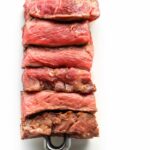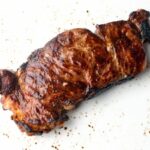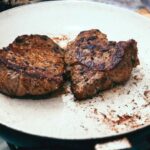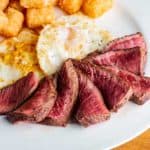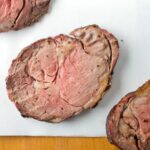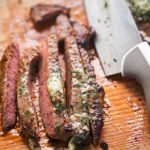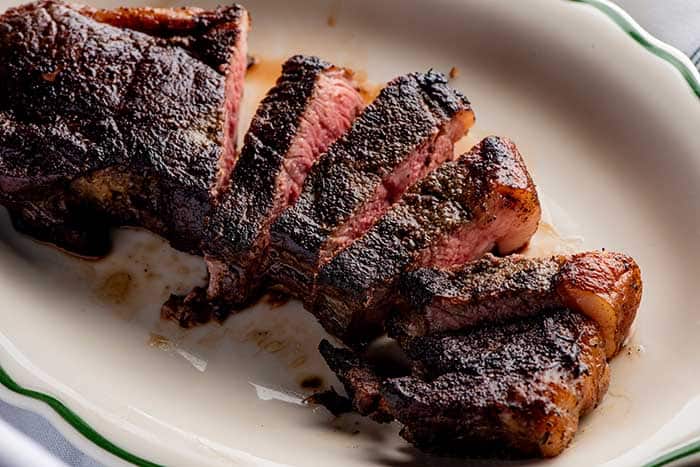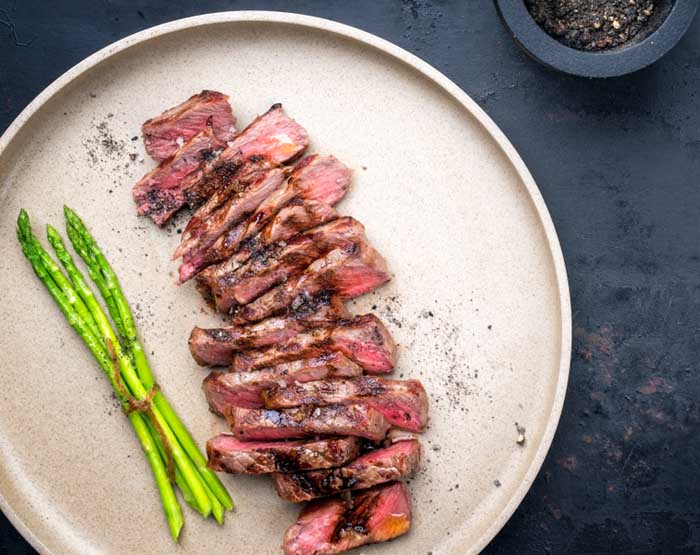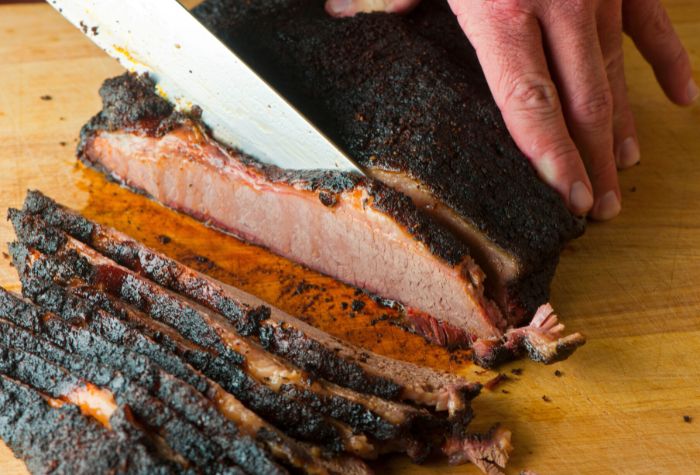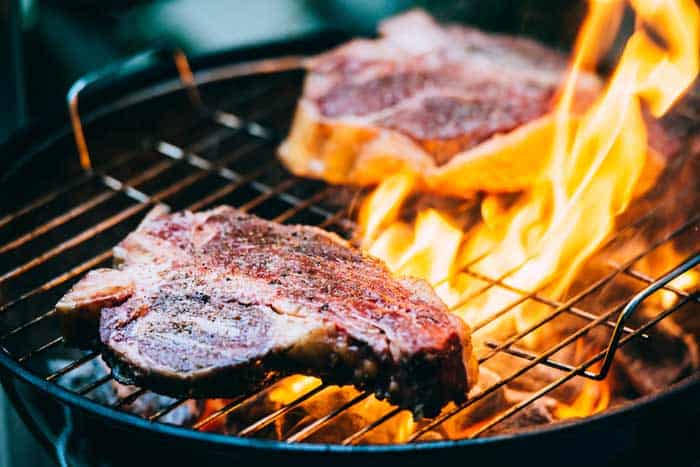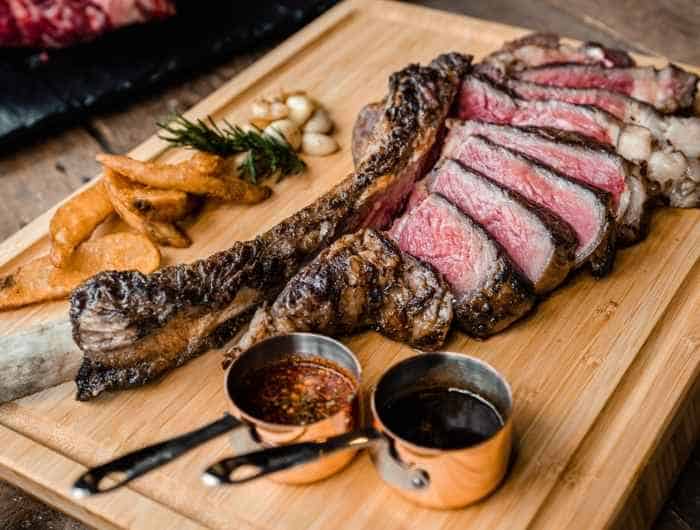Want the perfect rare, medium, or well-done steak? Get the perfect doneness for your grilled steak with our simple guide to steak temperatures.
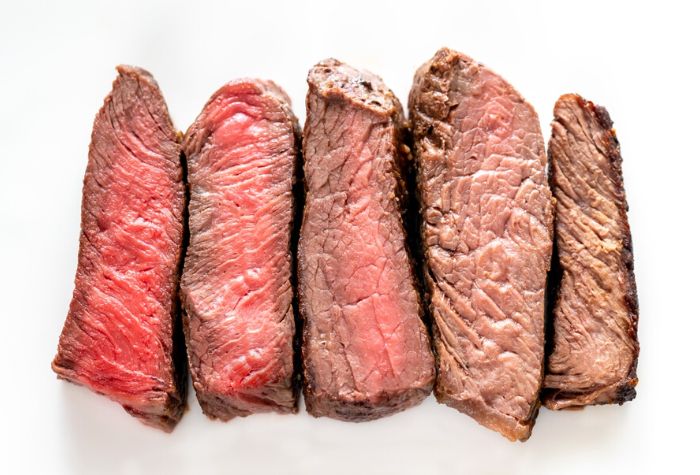
Everyone has their own opinions on the correct level of doneness for a steak. Sometimes it depends on the cut of the meat, and others just have a personal preference, but almost everyone can agree that cooking a steak perfectly to the required level of doneness is a skill.
Luckily for us, it’s a skill that can be learned and figured out thanks to science and a bit of kit that every respectable griller will have at hand – a meat thermometer.
Whether you prefer medium-rare or well-done, get your grilled meat right with our easy steak temperature guide.
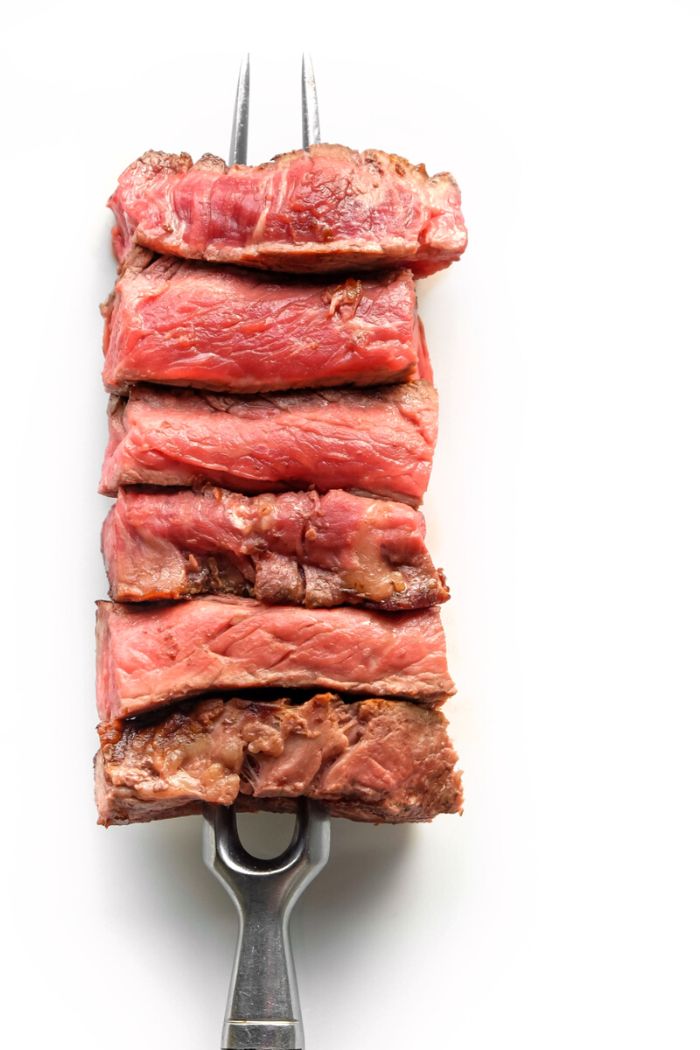
Why You Should Go By Temperature, Not Time
When cooking most other foods and following recipes, we’re always told to put a dish in the oven at x temp and for x amount of minutes. This works so well for oven-made dishes since they rely on indirect heat to cook the food.
Grilling food over direct heat and flames requires a different approach because the speed of conduction is a bit different.
Steak Science
When we grill steaks, we are searing the meat at high temperatures via conduction in order to create a caramelized exterior and a softer, tender interior. While the extent to just how tender the inside is will come down to whether you’re aiming for rare or well done, the aim is broadly similar.
The outside of a steak will cook first because it’s in direct contact with the hot grill grates, as well as radiant heat from the flames.
Heat energy then moves within meat from the steak surface towards the molecules in the center. However, because meat is approximately 75% water, this transfer of energy is not instant and can take some time.
The exact length of time this takes can depend on a variety of factors, from grill temperature to meat thickness and density, so it’s impossible to set a definitive cook time for any cut of steak. Instead, it’s important that we gauge our steak doneness by measuring meat internal temperature.
Target Steak Temperatures & Tips
Each level of steak doneness has a different internal target temperature to reach.
On a typical grill that is set to a medium-high temp of 400℉ (205°C), you need to aim for the following internal temperatures for a 1-inch thick steak.
Rare
Rare steak needs an internal temperature of 120 to 130℉ (49 to 54℃), which should take around 5 minutes on a medium-high grill.
Turn the steak once, giving it 2 minutes and 30 seconds on each side. When cut into, the center of the steak should have a cool red center with a lighter pink color around the edges.
Best cuts: Lean steaks such as filet mignon or top sirloin are ideal as rare steaks as they don’t have a lot of fat to melt.
Medium-Rare
Medium rare steak needs an internal temperature of 130 to 135℉ (54 to 57℃), which should take around 6 minutes on a medium-high grill.
Turn the steak once, giving it 3 minutes and 30 seconds on each side. When cut into, it should feel slightly firm, and the center of the steak should have a warm red center.
Best cuts: The best cuts of steak if you want to cook them to medium rare doneness are rib-eye/rib steaks, T-bone/Porterhouse, Flank steak, and Hanger steak.
Medium
Medium steak needs an internal temperature of 140 to 150℉ (60 to 65℃), which should take around 9 minutes on a medium-high grill.
Turn the steak once, giving it 4 minutes and 30 seconds on each side. When cut into, the texture should be firm and springy and pink throughout with a slightly red center.
Best cuts: If you want to cook a steak to medium doneness, your best options are skirt, chuck flap, and chuck short rib cuts.
Medium-Well
Medium-well steak needs an internal temperature of 155 to 165℉ (68 to 74℃), which should take around 11 minutes on a medium-high grill.
Turn the steak once, giving it 5 minutes and 30 seconds on each side. When cut into, the center of the steak should have a slightly pink tinge.
Best cuts: New York strip steak has a good amount of fat which means it tastes great when cooked medium-well and even well done.
Well Done
Well-done steak needs an internal temperature of 170℉ (77℃) or more which should take around 13 minutes on a medium-high grill.
Turn the steak once, giving it 6 minutes and 30 seconds on each side. When cut into, the center of the steak should show little to no pink.
Best cuts: For well-done steaks, you want a good amount of fat marbling so that it doesn’t dry out – Skirt or hanger steak tastes good when well done.
Quick Tip: It’s always a good idea to prepare steaks that are set to be well done with a dry rub (that includes salt) a few hours beforehand. The salt in a dry rub will enhance the protein fibers’ ability to hold on to water and means less chance of them drying out during the longer cooking time.
Blue Steak
Blue steak needs an internal temperature of 115 to 120℉ (46 to 49℃).
It should be seared on the outside, taking around 90 seconds on each side. When cut into, blue rare steak should have a soft texture, be entirely red and be cold to the touch in the center.
Best cuts: As blue steak doesn’t get up to very high temperatures, you want to use a cut that has very little fat and tissue on the meat. Tenderloin or Flat iron steaks are great options if you want blue steak.
How to Use a Meat Thermometer
The best way to check the internal temperature of a steak is by using an instant-read probe thermometer. The thermometer needs to be placed into the thickest part of the steak, avoiding any bones or gristle (as they conduct heat differently to pure meat and can give an incorrect reading).
It’s important to remember that your steak will have some carryover cooking, so you want to take the meat off the grill when the thermometer reads at a temperature of 5 degrees below your final target temperature.
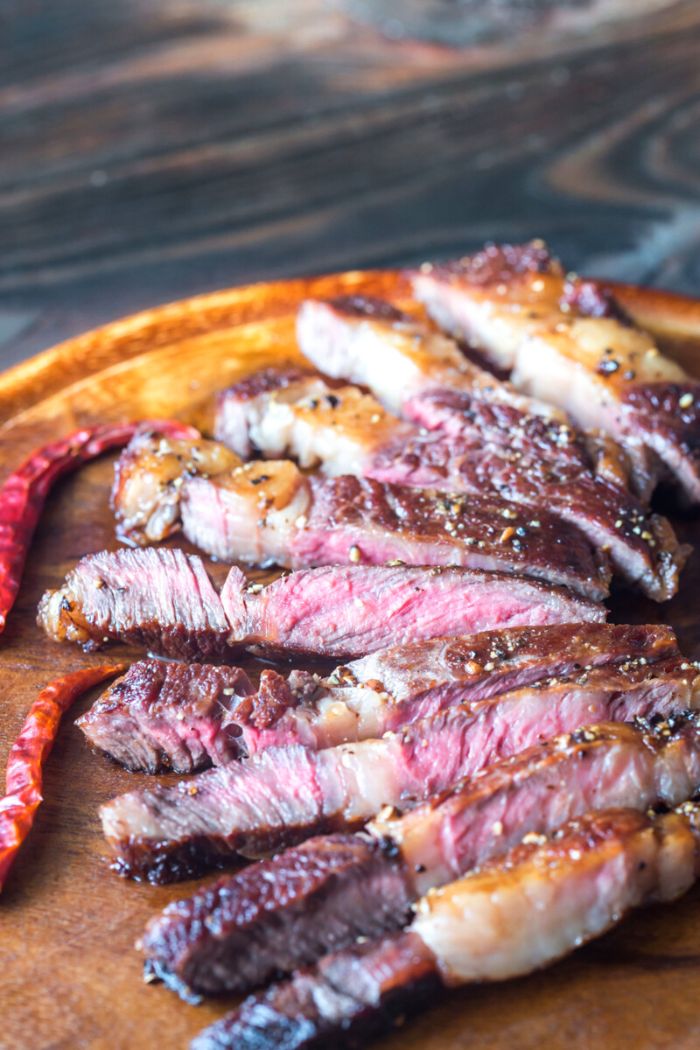
Steak Cooking Tips
Rest
Letting your steak rest after cooking allows the moisture that has been pushed out of the muscle fibers (the muscle fibers contract while cooking, which causes meats to release juices) to redistribute through the meat. Resting steak for a few minutes before cutting into it after cooking means you won’t lose these tasty juices on your plate.
Resting your steak is also important as it allows for carryover cooking and lets your steak reach the perfect internal temperature.
Dry Brine Before Cooking
Dry brining steak before cooking is a great way to ensure a flavorsome and tender steak. Dry brining helps to flavor the steak by bringing out the natural flavors as the salt breaks down the muscle proteins in the meat. Breaking down these proteins also tenderizes the steak and helps the meat retain more moisture.
Slice Against the Grain
When serving, you should always cut steak against the grain to avoid it becoming chewy. When we talk about the ‘grain’ of meat, we are referring to the way in which the muscle fibers run across the meat. These fibers can be hard to break down when chewing, so if we cut against the grain and make the fibers short, they will be much easier to chew.
Carryover Cooking
Remove from heat 5°F before the target temperature. Steak will continue to cook after it’s been removed from the grill.
As explained above, cooking is the process of heat transferring through food, so when the steak is removed from the grill, that heat from the surface will continue to work its way toward the center of the steak.
This is why it’s vital to remove your steak from the grill when the internal temperature reads 5 degrees below your target temperature.
If you leave the steak on the grill until the required internal temperature is reached, it will continue to cook past the intended level of doneness while resting.
Use Quality Meat
The first to consider when thinking about grilling steak is the quality of the meat. You want to go for the best quality that your budget allows; shopping with a local butcher is usually better than the grocery store, as you can ask their advice while buying. If you are shopping at the grocery store, don’t be fooled into thinking bigger is better – you want quality over quantity.
When buying a steak, the meat should look moist but not wet or slimy, have a good and even color and feel firm to the touch. The edges and trimming of the steak should be even and neat. Any packaged steaks should come from a refrigerated section; make sure that it feels cool/chilled, and avoid any packaging with liquid pooling in the bottom.
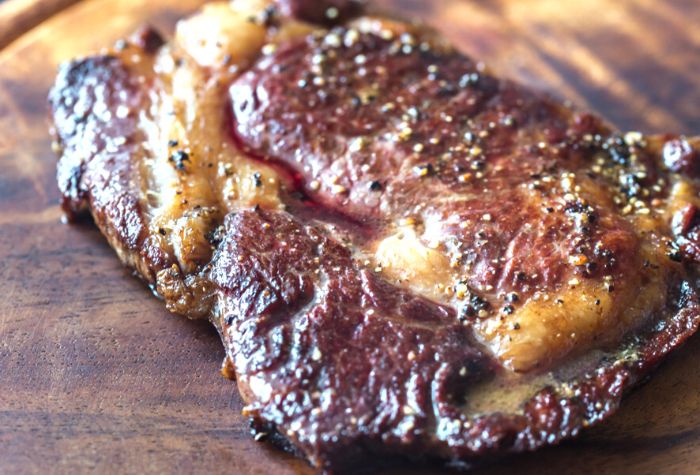
How to Tell When Steak is Done Without a Thermometer
If you don’t have a thermometer, it is possible to tell when your steak is done with something that pretty much all of us have handy – your finger!
The Finger Test
The Finger Test is a way of checking the doneness of a steak by comparing it to the feel of different parts of your hand.
Relax your hand and take your index finger of the other hand; each area you press will show you the firmness you are looking for when pressing into your steak, depending on the level of doneness you require
First, we’ll cover the two extremes of doneness as this makes it easier to feel the difference in the levels in between:
- Raw meat: Push your finger onto the fleshy part between your thumb and your wrist (the cushion of your hand); this is the firmness you would expect to feel with raw steak.
- Well-done: Press your pinky finger to your thumb and feel the cushion of your hand again; it will be firm and is how well-done steak should feel.
For rare, medium-rare, and medium, we use our other fingers to create the relevant level of firmness:
- Rare: Press your index finger to your thumb and feel the cushion of your hand; it will have less give than that of raw meat but still feel spongey.
- Medium-rare: Press your middle finger to your thumb and feel the cushion of your hand; it will feel firm but springy.
- Medium: Press your ring finger to your thumb and feel the cushion of your hand, it will feel firmer than medium rare, but you can still press on it slightly to get some spring back.
